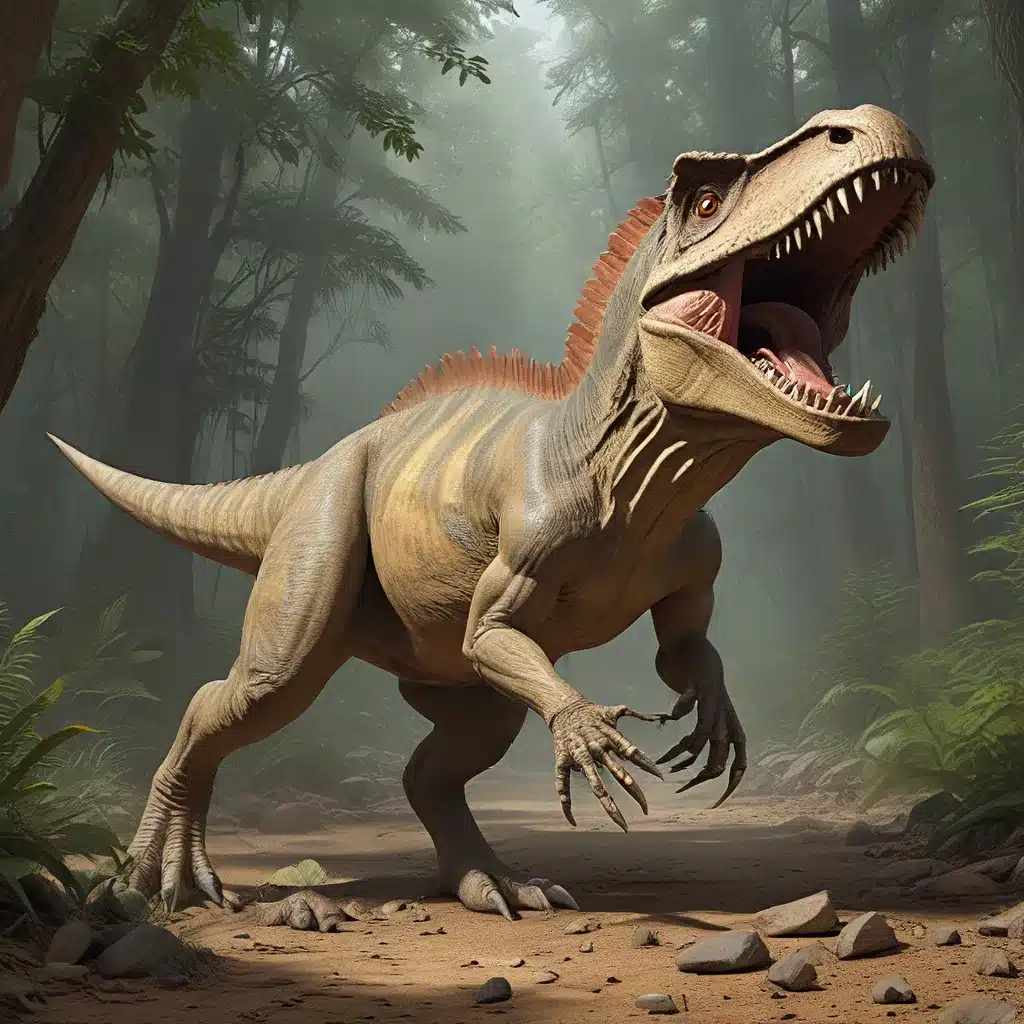
Discovering Dinosaurs: From Fossils to Folklore
The dinosaurs have captivated the human imagination for centuries, from ancient tales of monstrous reptiles to the modern-day fascination with their fossilized remains. As our understanding of these prehistoric giants has evolved, so too have the mysteries surrounding them. Delving into the rich tapestry of dinosaur discoveries and the cultural impact they’ve had, we uncover a world of cryptids – creatures whose existence remains elusive, yet whose legends have endured.
The story of the dinosaurs begins not with their first appearance on Earth, but with the first human encounters. Long before the term “dinosaur” was coined, ancient civilizations across the globe stumbled upon the fossilized bones of these giant reptiles, sparking myths and legends that have persisted to this day. From the dragon bones of China to the cyclops of Greek and Roman lore, these enigmatic remains captivated the imaginations of our ancestors, who struggled to make sense of the strange and wondrous creatures they had unearthed.
As early human civilizations encountered these fossilized remains, they wove tales of mythical beasts that roamed the ancient world. The Uktena, a “dragon-like horned serpent” of Cherokee lore, was likely inspired by the discovery of large reptile fossils in the American Southeast. Similarly, the Thunderbird of Native American mythology, with its striking resemblance to pterosaur fossils, captured the imagination of tribes across the continent.
Paleontological Pioneers and the Dinosaur Renaissance
The scientific study of dinosaurs truly began to take shape in the early 19th century, as intrepid paleontologists like Mary Anning, Gideon Mantell, and Richard Owen began to piece together the clues left behind in the fossil record. Their groundbreaking discoveries, from the Ichthyosaurus to the Iguanodon, challenged the prevailing beliefs about the Earth’s history and the nature of life itself.
As the field of paleontology advanced, the Bone Wars between Othniel Marsh and Edward Cope fueled an intense race to uncover new dinosaur species, leading to a surge of fossil discoveries that would captivate the public imagination. The Tyrannosaurus rex, the Triceratops, and a host of other iconic dinosaurs were brought to light during this remarkable period, sparking a renewed fascination with these ancient reptiles.
However, the dinosaur renaissance of the 1960s and 1970s would truly revolutionize our understanding of these prehistoric creatures. John Ostrom’s research on the Deinonychus challenged the prevailing view of dinosaurs as slow, dim-witted reptiles, revealing them to be warm-blooded, agile, and highly intelligent animals. This paradigm shift paved the way for a new generation of paleontologists to explore the mysteries of dinosaur biology, behavior, and evolution.
Cryptozoological Conundrums: The Enduring Allure of Dinosaur Mysteries
As our scientific knowledge of dinosaurs has grown, so too has the public’s fascination with the cryptozoological aspects of these ancient creatures. The idea that some elusive or undiscovered species of dinosaur might still roam the Earth has captivated the imaginations of cryptozoologists and monster enthusiasts alike.
Legends of living dinosaurs, such as the Mokele-mbembe of Central Africa or the Loch Ness Monster of Scotland, have persisted for centuries, fueling the belief that these cryptids could still exist in remote or unexplored regions of the world. While the scientific evidence for such creatures remains elusive, the allure of discovering a “living fossil” continues to inspire the public’s fascination with the unknown.
Cryptozoological research on these dinosaur-like creatures has also contributed to our understanding of the cultural and psychological factors that shape our perceptions of the natural world. Adrienne Mayor’s work has revealed how ancient myths and legends were often rooted in the discovery of fossilized remains, underscoring the deep connections between paleontology and folklore.
Jurassic Reimagined: The Enduring Legacy of Dinosaurs in Popular Culture
The enduring fascination with dinosaurs has also left an indelible mark on popular culture, from the pages of pulp fiction to the silver screen. Arthur Conan Doyle’s “The Lost World” and Edgar Rice Burroughs’ “The Land That Time Forgot” were among the first to bring these prehistoric beasts to life in the realm of literature, inspiring generations of readers and filmmakers.
The cinematic depiction of dinosaurs has evolved alongside our scientific understanding, from the crude stop-motion creatures of the early 20th century to the groundbreaking CGI of the “Jurassic Park” franchise. These films have not only captivated audiences but have also influenced the way we perceive and interact with these ancient creatures, shaping our collective imagination and fueling the ongoing exploration of the dinosaur mysteries.
Even in the modern era, the idea of resurrecting or cloning dinosaurs remains a tantalizing prospect, captured in works of science fiction and speculative fiction. While the technical challenges of such endeavors remain formidable, the persistent fascination with these prehistoric giants continues to inspire new generations of paleontologists, storytellers, and adventurers to uncover the mysteries that still lie buried in the fossil record.
Conclusion: Embracing the Unknown
The story of the dinosaurs is one of discovery, innovation, and the enduring human desire to unravel the mysteries of the natural world. From the ancient myths and legends that first captured our imaginations to the cutting-edge scientific research that continues to reshape our understanding, these prehistoric giants have left an indelible mark on our collective consciousness.
As we delve deeper into the fossil record and explore the cryptozoological realms that still hold the promise of undiscovered dinosaur-like creatures, we are reminded of the vast and wondrous tapestry of life that has graced our planet. By embracing the unknown and the unexplained, we open ourselves to the possibility of new discoveries, and the opportunity to uncover the secrets that have long been buried in the sands of time.


